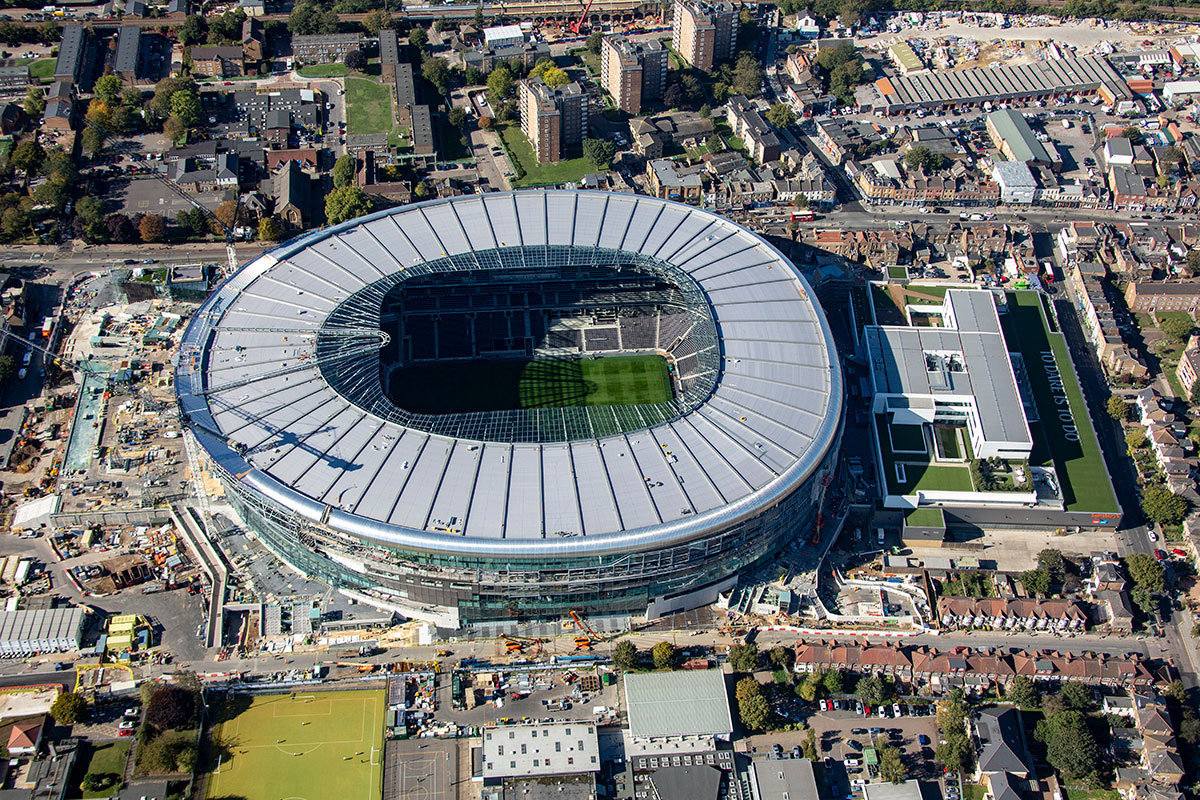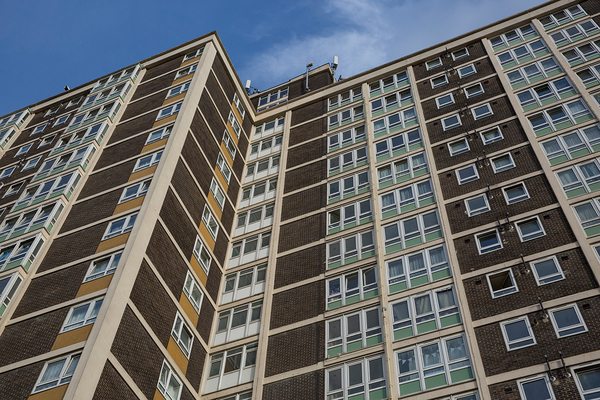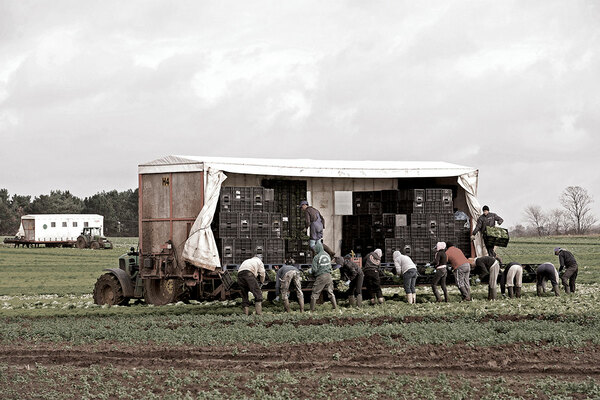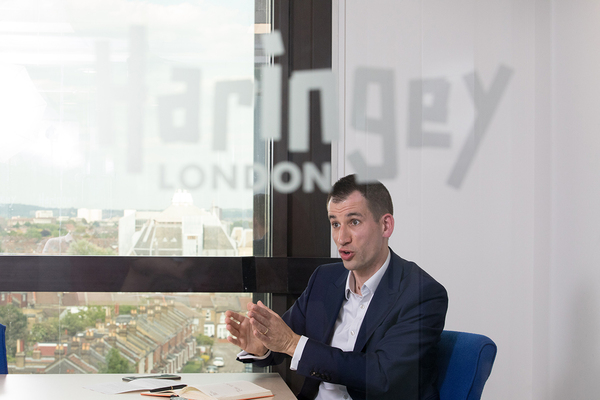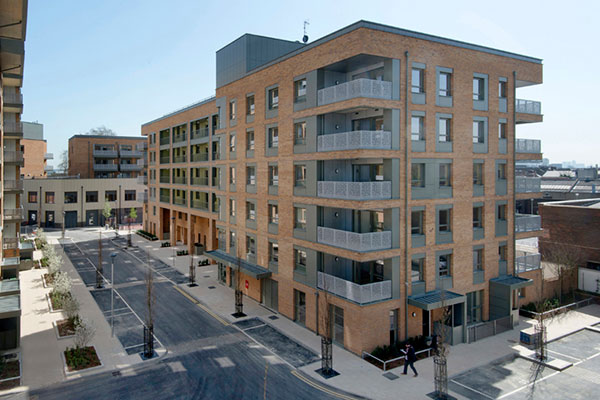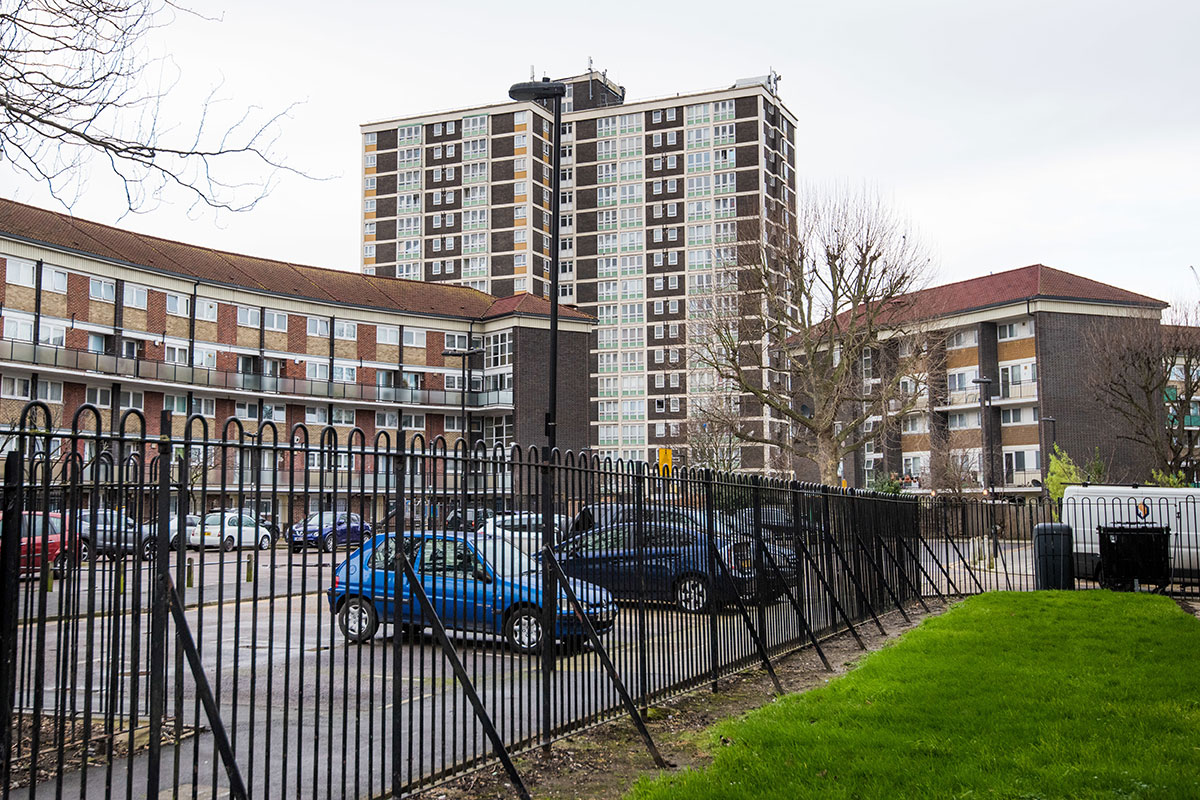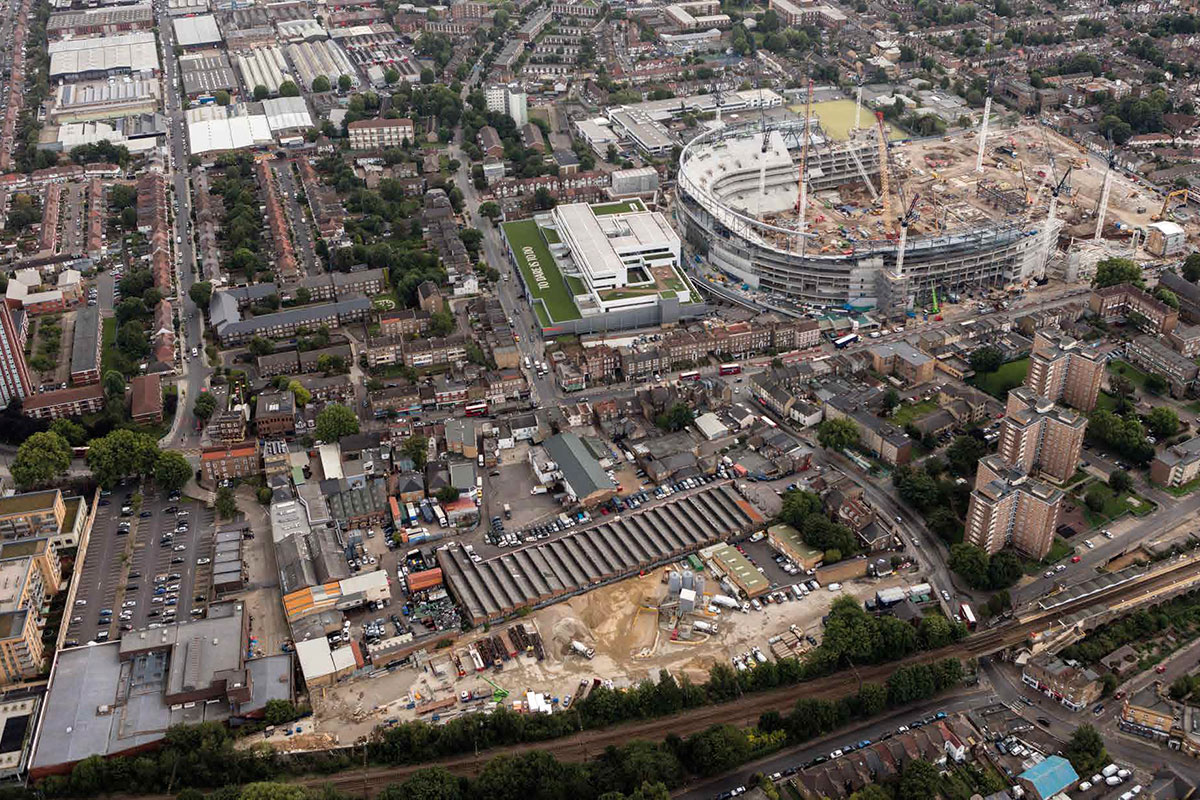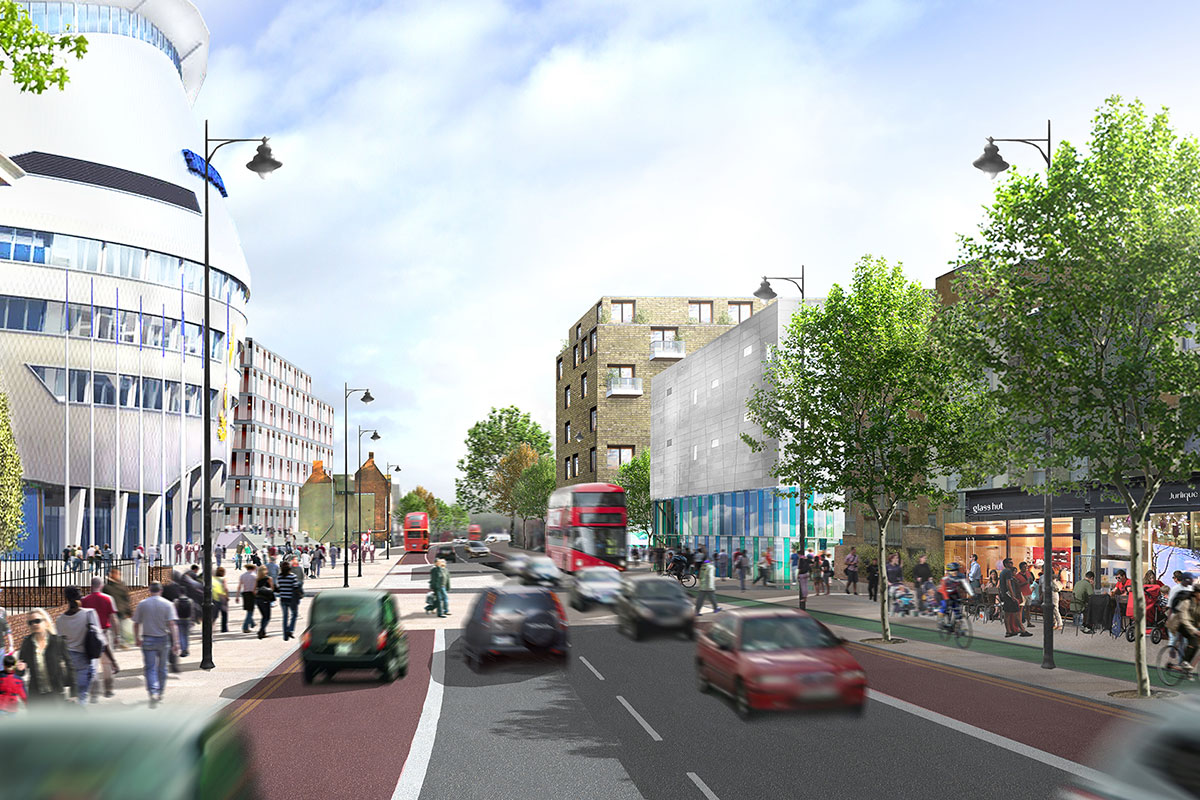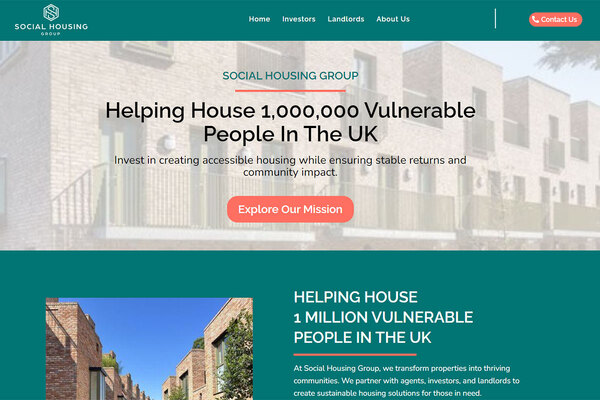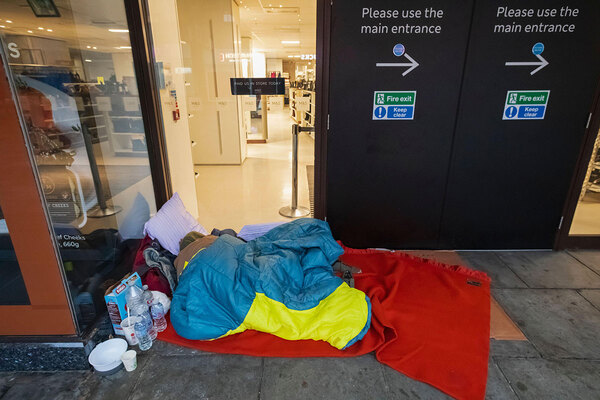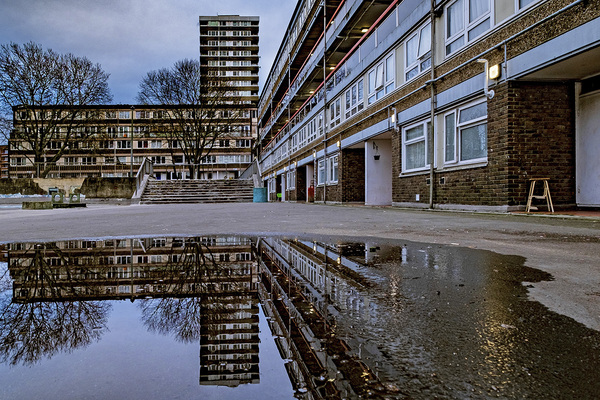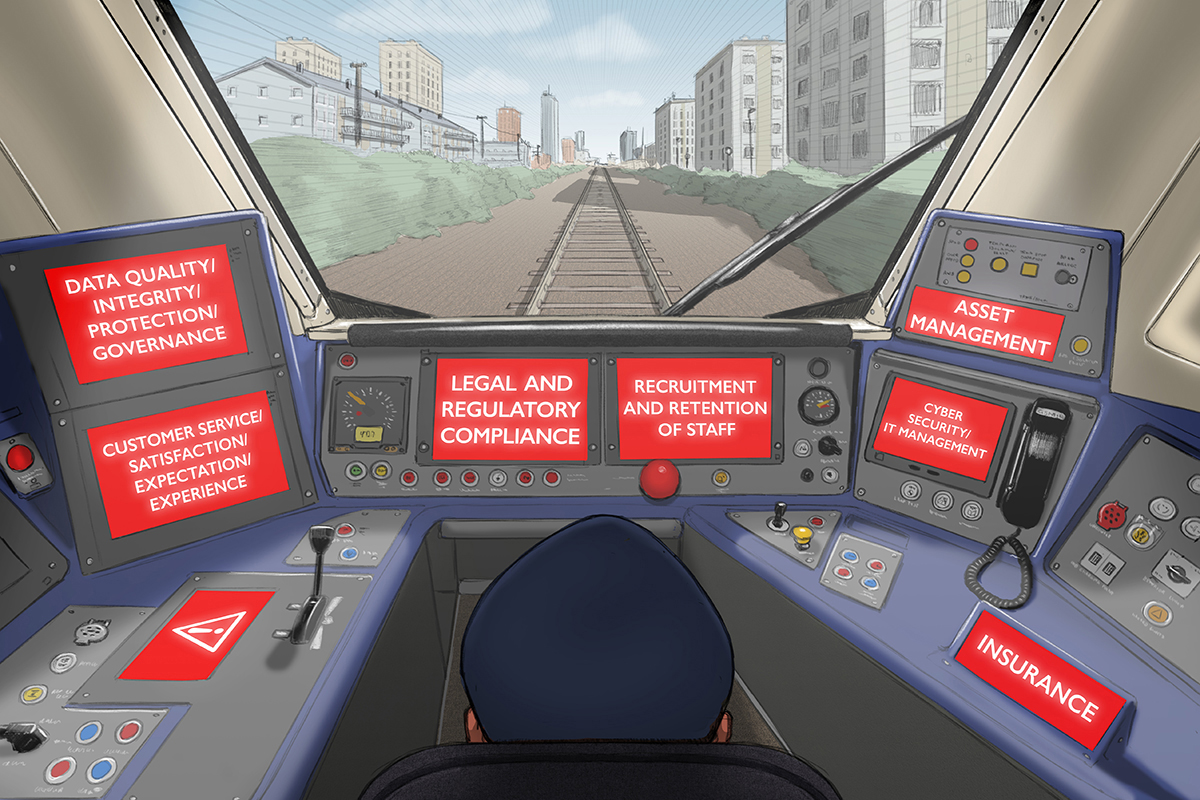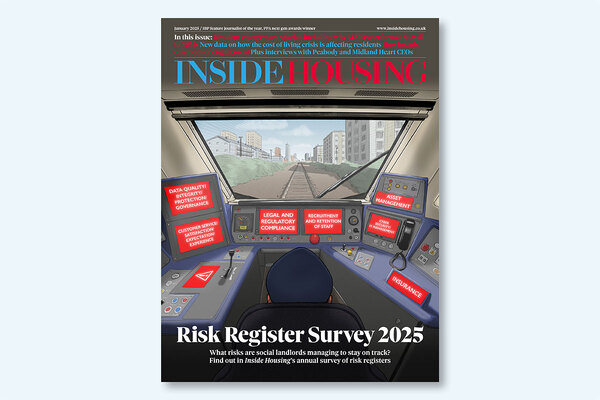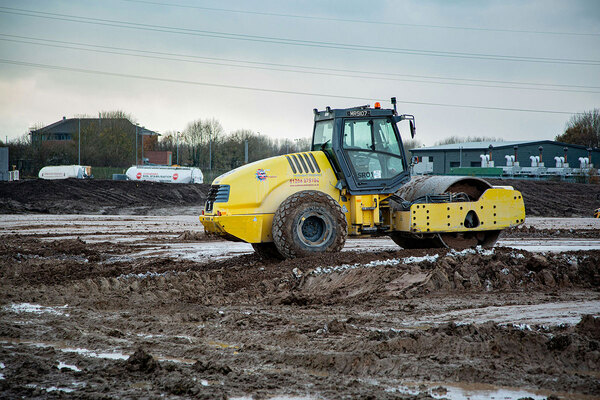You are viewing 1 of your 1 free articles
Home game: a look at Tottenham Hotspur’s housing ambitions
As its new stadium opens this week, Tottenham Hotspur Football Club makes the step from football club to property developer – pitching itself into the tense debate about gentrification in London. Tim Clark finds out how it is coping. Photography by David Goddard/Getty, PA Photos, Arup, Galliford Try Partnerships, Tottenham Hotspur
The turf has been christened by club legends Paul Gascoigne and Jürgen Klinsmann. The in-house brewery has already served up hundreds of pale ales and, for Tottenham Hotspur Football Club, the opening of its new stadium is a huge staging post in its ambitions to become one of Europe’s footballing giants.
But away from the club’s sporting ambitions, the 62,062-capacity ground forms the centrepiece of a network of developments which, if all comes to fruition, will see Spurs take a new and unusual step for a football club – it will become in its own right a significant player in Tottenham’s housing market.
As part of the stadium redevelopment, there are plans in place to build at least 1,500 homes across five sites, one of which is already complete.
Known plans include 585 new apartments on the stadium site, 330 homes at a site called the Goods Yard, located close to White Hart Lane Station, and another project at 500 White Hart Lane in partnership with Fairview New Homes, which will see 144 homes built.
“I understand where people’s fears are coming from. [But] it’s not about gentrifying the place, we are looking to socially and economically develop the area”
The club is in early planning stages for a further 300 homes on a site on High Road, near White Hart Lane.
Spurs also took a 50% stake in the 222-home development on the now-completed Cannon Road scheme with Newlon Housing Trust.
There is no doubt that this is a major undertaking for the club. According to a Telegraph report in 2018, construction costs of developments in the surrounding area account for over half the projected £850m bill for the new stadium.
But what should the sector make of Spurs’ housing ambitions? And how do they sit within the context of a part of north London where housing, and new development in particular, has become a politically charged and controversial issue in recent years?
Understanding the football club’s plans for housing-led regeneration requires an understanding of the recent past of the area. This traces its history back to the 2011 riots.
These riots, which spread across the country in a week-long wave of violence, began with a protest in Tottenham. This triggered a political post-mortem in which former mayor of London Boris Johnson appointed veteran developer Stuart Lipton to head a taskforce aimed at identifying the root causes of the unrest.
Titled It Took Another Riot, Mr Lipton’s report concluded that poor-quality social housing contributed to social deprivation, overcrowding and crime. It advocated plans to introduce a wider mix of tenures into Tottenham to help rebalance the community and recommended the formation of a new body similar to a Mayoral Development Corporation to spearhead regeneration as a way to drive “lasting change” in Tottenham.
But this meant a move away from new social housing development.
It said: “Government funds… should not be tied to social housing requirements. With extremely high levels of social housing, the area would greatly benefit from a more balanced mix of housing tenure.”
According to Dave Morris, secretary of the Haringey Federation of Residents Associations, the report “scared the living daylights” out of the local authority, which would have been deprived of planning powers for the area.
“That is why they [the council] repositioned themselves as the private developer’s best friend,” he says.
Mr Morris believes it was this that set the council down the path of setting up the controversial Haringey Development Vehicle (HDV). This was a proposed partnership with developer Lendlease to take control of the council’s housing estates for a programme of demolition and rebuild.
The Cannon Road scheme of 222 homes, with 122 for affordable rent and 100 for shared ownership. It was built on the site of a former rubber factory
The project, despised by activists, triggered a political crisis in Haringey. It ultimately resulted in the resignation of council leader Claire Kober, deselection of a number of other supporters of the project on the council, and control of the borough passing to councillors supported by Momentum, the grassroots pro-Jeremy Corbyn activist group. The HDV was eventually scrapped in July 2018.
This is all recent history and scars are fresh; any discussion of new housing regeneration projects in the area is set against this backdrop.
Spurs’ housing plans have not generated the same level of political heat as the HDV.
The club has sought out sites which were occupied by former industrial units or disused factories to develop, and have added to the overall housing stock in the borough – rather than opting for demolition.
It could be argued that the development opportunities that have been put forward are a way of countering the long-term decline in the manufacturing industries
The 222-home Cannon Road scheme was built on the site of a former rubber factory and includes a 420-pupil primary school.
Goods Yard occupies what is currently a works compound for the stadium, the 500 White Hart Lane scheme has been built on derelict land.
Of the 222 homes at Cannon Road, 122 are allocated for affordable rent and 100 for shared ownership. Taken as a whole, the club has also delivered a large proportion of affordable housing upfront.
It could be argued that the development opportunities that have been put forward are a way of countering the long-term decline in the manufacturing industries, which were once central to this part of London and are now only seen in abandoned industrial sites in the Lee Valley. A greater emphasis on retail and mixed-tenure housing is seen as a way of rebalancing Tottenham from single-tenure social housing estates and derelict industry.
Northumberland Park, one of the large estates cited in regeneration statements that Tottenham is “skewed heavily” towards social rent
However, not everyone is happy with the details of the club’s schemes, especially when it comes to tenure mix.
The stadium project itself includes 585 homes with no affordable housing. Originally, the club had bid to build 297 homes, with none of them affordable. But this was upped to the current level of more than 500 in a planning application in 2012.
At this point, it was suggested that more affordable housing could be provided but Spurs continued to insist this would make the development unviable.
The club also managed to successfully negotiate down the Section 106 obligations in a previous application in 2012 from £16m to £0.5m. A new submission in July 2015 would have doubled the number of homes from 285 to to 579, increaing the level of affordable homes as a result. But a viability assessment concluded that the new stadium plans were “less viable” than the 2012 scheme.
The viability report for Spurs by KPMG, seen by Inside Housing, assumed that the stadium will be only 90% occupied (53,000 fans) when built, and also offset profits from any housing development with investment in player wages and matchday costs. The report noted that “any Section 106 requirements would make the development even more unattractive to an investor than is currently the case”.
A financial review mechanism for the housing development would see the club retain the first £48.4m of development profits from the housing scheme, with any profits above that level shared equally between the club and the council up to the point where any affordable housing commitments would be fulfilled. To exceed this value, sales values would need to be “in the region of £911 per sq ft”.
According to the latest research by Savills, new build homes in Tottenham Hale, which lies to the south of the new stadium, are currently below £700 per sq ft.
Of the 330 homes at Goods Yard, 46 will be for social rent, with 25% intermediate rent and 61% private sale or rent. This is not an unusual split for a private development, however the officer’s report stated that the lack of reprovision of social housing on the site was “not acceptable”.
But in the planning and regeneration statements for both the 500 White Hart Lane and Goods Yard schemes, drawn up by planning and development consultants Quod, there are echoes of Mr Lipton’s view of social housing.
An aerial view of the Goods Yard site, which is located adjacent to the stadium. The plans for development include 330 new homes and office and retail space
They argue that Tottenham is “skewed heavily towards council and other social rented properties, including large estates such as Northumberland Park and Love Lane”.
The statement notes that “data from the GLA [Greater London Authority] shows that workless households account for half of households in social rented homes, compared to only 7% in owner-occupied housing. The current tenure mix therefore re-enforces the high levels of worklessness and low levels of household income”.
Charles Adje, cabinet member for strategic regeneration at Haringey Council, acknowledges the concerns around this.
Tottenham’s new stadium gleams in the early morning sunshine, juxtaposed with the rows of fast food takeaways, betting shops and hardware stores
“I understand where people’s fears are coming from,” he tells Inside Housing. “[But] it’s not about gentrifying the place, we are looking to socially and economically develop the area. That’s what we are about.”
Tottenham’s new stadium gleams in the early morning sunshine, juxtaposed with the rows of fast food takeaways, betting shops and hardware stores. Up close it is even more impressive and inside it smells like a new car awaiting a test drive.
Opposite the development is the Love Lane Estate, home to 297 residents which is due to be demolished if a £1bn regeneration plan dubbed High Road West (HRW) goes ahead. This would deliver 2,500 new homes, as well as a library, learning centre and a new public space linking the stadium with White Hart Lane Station. Spurs is not a partner on this scheme, which is a joint venture between the council and Lendlease.
A CGI of the High Road West regeneration, being done via a joint venture between Haringey Council and Lendlease. It will deliver 2,500 homes
But despite Spurs not being involved in this scheme, many of Love Lane’s residents and local businesses – fairly or otherwise – inextricably link the club’s development ambitions to the other big and more controversial housing developments in the area, such as this and the now-mothballed HDV proposals.
Mr Adje says that the council is “open to new ideas” with regard to this scheme but subject to a ballot, it will go ahead.
“The HRW [contract] was signed before the [current] administration came into power in May,” he adds. “That is a legally binding contract, collectively, whatever needs to happen, we need to work with our partner to look at the various options. Exiting is not on the agenda. Lendlease has spent quite a lot of money working with businesses and residents.”
The council plans to ballot residents about the demolition – a condition of £60m funding from the mayor’s office. This has been put on hold while the council looks at the design of the scheme to see if it can deliver more social rented housing, work which must be completed before the ballot is carried out. But the council is clear that a ballot will be taken.
Many of Love Lane’s residents and local businesses – fairly or otherwise – inextricably link the club’s development ambitions to the other big and more controversial housing developments in the area
The current plan involves a new home in the redevelopment for all council tenants on a secured tenancy, at social rent, with all housing costs paid. Some tenants have elected to move elsewhere in the borough, with the homes they leave behind to be used as temporary accommodation; currently 170 of the 297 residents have done so, many of whom will get a vote in the ballot.
One business owner who wished not to be named tells Inside Housing: “[Regeneration] shouldn’t be the wipe-out of a whole area. There is a difference between knocking the walls down and giving a place a lick of paint.
“If you are lucky enough that you own your house, you’re going to move out. If you don’t, you’re going to be pushed out.”
A spokesperson for Tottenham Hotspur stresses that this is a council scheme, but rejects the idea that residents may have to move out. “We see no reason why any local resident should need to move away – if anything, we are doing everything we can to make this a better place to stay and live,” they add.
“We are delivering schools, shops, jobs and... affordable housing, and our vision is for a vibrant mixed-tenure community.”
But the fears linger. And as fans were looking forward to seeing Harry Kane, Dele Alli and the other Spurs stars take to the pitch for the first time this week, it is worth pondering the long-term housing legacy of London’s latest footballing cathedral. For many, the result is far from certain.
